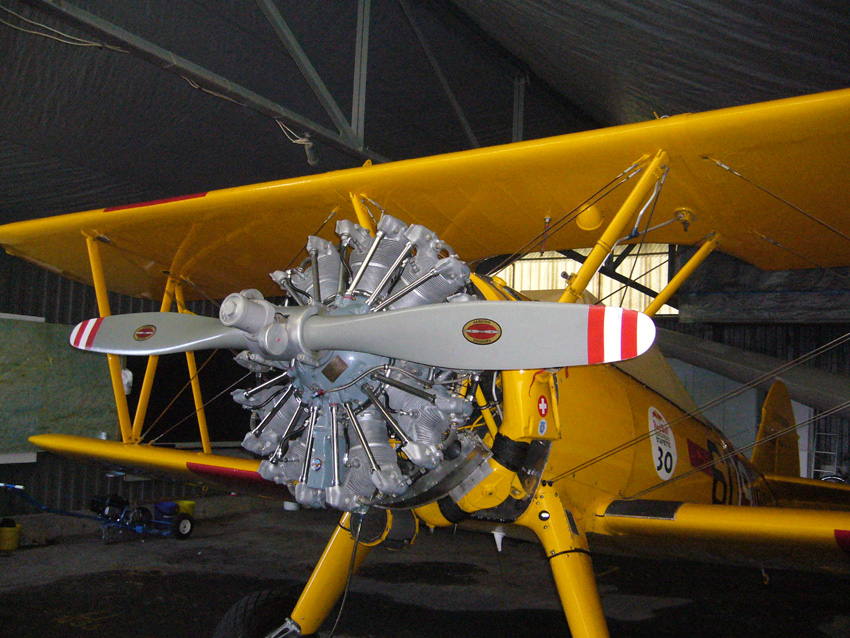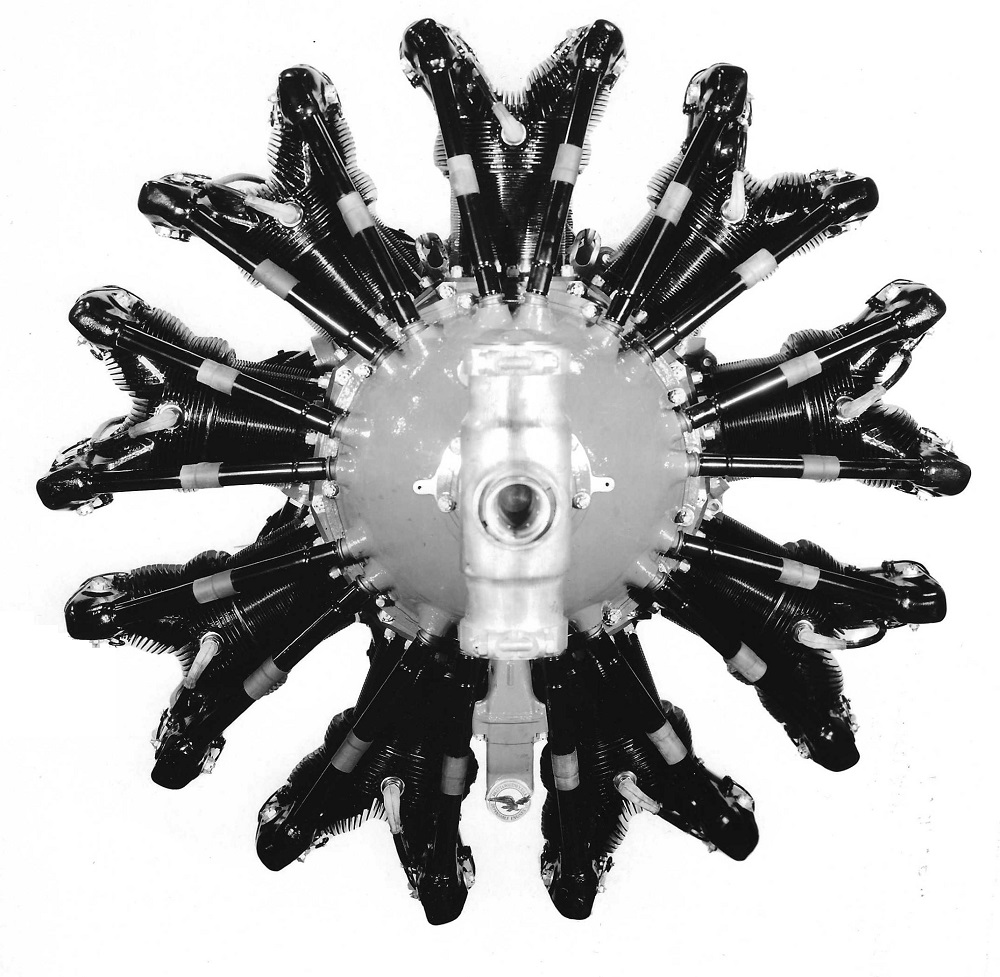
| Pratt & Whitney R-985 Wasp Junior | |
|---|---|---|
| |
| |

The original Pratt & Whitney R-985 Wasp Junior. |
|
The Pratt & Whitney R-985 Wasp Junior was a 9 cylinder, single-row, air-cooled radial engine with horsepower ranging from 300 hp to 450 hp, depending on the model and configuration. It was used in a range of aircraft that included the Grumman Goose, Lockheed Model 10A and Beechcraft Model 18. Jacqueline Cochran used the Wasp Junior to set speed and altitude records in a specially built D17W Beechcraft Staggerwing. The Wasp Junior was smaller version of the R-1340 Wasp designed to compete in the market for medium-sized aircraft engines. Development was completed in 1929 and the engine went into production in early 1930 at the new 400,000 sq/ft Pratt & Whitney plant that opened on January 1, 1930 in East Hartford.1 The original Wasp Junior was rated at 300 hp at 2,000 rpm and and was similar in power and displacement to the J-6-9 Whirwind. A supercharged version developed 400 hp at 2,300 rpm at 4,000 ft. and by 1932 power was up to 420 hp with racing versions greater than that.2 In 1931, Pratt & Whitney developed a “hot spot” or heat exchanger on the oil regulator to improve engine performance. It was installed between the carburetor and the rear section of the engine. The regulator used the temperature drop of the gasoline evaporation to cool the oil and the same unit used the engine exhaust to heat the fuel/air mixture in cold weather.3 |
 Most Stearmans were originally delivered with either the Lycoming R-680 or the Continental R-670. 150 were delivered with the Jacobs R-755 and 61 with the Wright J-5 Whirlwind. Many Stearmans were later converted to the R-985 since parts were more readily available.4 Above, a Boeing-Stearman with a R-985 Wasp Junior aftermarket conversion. |
 (Photo: NEAM Ramsay Research Library) |
|
More than 39,000 Wasp Juniors were produced from 1929 until the end of production in 1953.5 It was considered the best engine in its class and many Wasp Junior engines are still flying today. |
| Specifications: | |
|---|---|
| Pratt & Whitney R-985 Wasp Junior | Date: | 1929 |
| Cylinders: | 9 |
| Configuration: | Single-row, air-cooled radial |
| Horsepower: | 400 hp (298 kW) |
| RPM: | 2,300 |
| Bore and Stroke: | 5-3/16 in. (132 mm) x 5-3/16 in. (132 mm) |
| Displacement: | 985 cu. in. (16.14 liters) |
| Weight: | 640 lbs. (290 kg) |
Endnotes:
|
1. The Pratt & Whitney Aircraft Story. Pratt & Whitney: 1950. 101. 2. Herschel Smith. A History of Aircraft Piston Engines. Manhattan, Kansas: Sunflower University Press, 1993. 118. 3. Howard Mingos, ed. The Aircraft Year Book for 1932. New York: Aeronautical Chamber of Commerce of America, Inc., 1932. 187. 4. Peter M. Bowers. Boeing Aircraft Since 1916. New York: Funk & Wagnalls, 1968. 221. 5. R-985 Wasp Jr. Engine. Pratt & Whitney. www.pw.utc.com/R985_Wasp_Jr_Engine. |
Return To Engine Index.
© Larry Dwyer. The Aviation History On-Line Museum. All rights reserved.
Created February 18, 2013. Updated August 18, 2024.